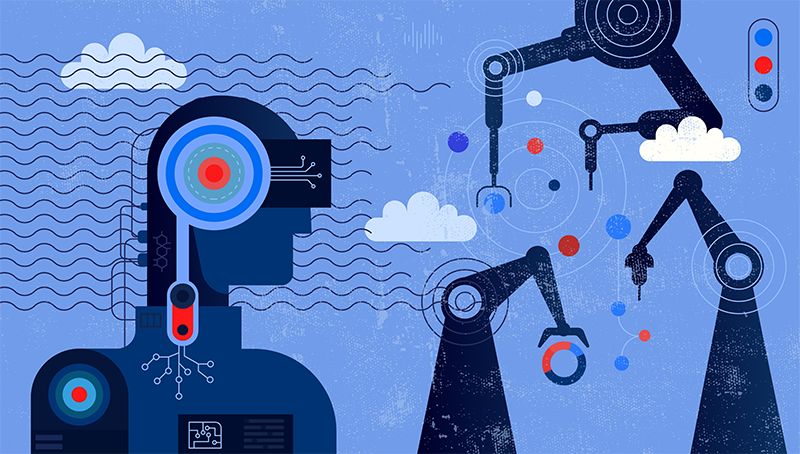Hey Alexa, How Will AI Change the Glazing Industry?
New tech may improve efficiency, but won’t replace glazing expertise

I was recently talking with my daughter about changes her school has made in response to ChatGPT, an artificial intelligence (AI) technology that generates text based on prompts. While some academics claim this technology signals the end of high school (and college) English, I’m a little skeptical of its abilities after asking AI to generate a response to the question, “How can AI help improve the architectural side of the glass industry?” Its partial answer is below:
“AI can help improve the architectural side of the glass industry in several ways:
- Design and Modeling: AI can be used to assist with the design and modeling of architectural glass structures. By analyzing data on building codes, safety regulations, and other design requirements, AI can provide insights and recommendations on how to optimize the design of glass structures. This can help to improve safety, efficiency, and aesthetics…”
Though the answer this machine provided lacked specificity and wasn’t very engaging to read, I can’t help but consider the other ways AI technology can be used in the glass industry.
As it says, AI seems like it can help specifiers and engineers work more efficiently. It also seems like it could help manufacturers field customer questions quicker and with increased accuracy. However, as a tool, AI is not without limitations, which may give some reservations about integrating it into their business.
How AI works, and how it offers businesses efficiency
Most AI uses a form of machine learning. At its most basic, this technology processes vast amounts of aggregated data to identify patterns and make decisions based on those patterns, but there are other, more complex learning processes as well.
Like the AI text response above implies, the subsets of machine learning could be used to review designs to ensure a glazing assembly meets code requirements, provides optimum efficiencies and guards against intruders and other security risks. Perhaps, it could even analyze human-made designs to ensure they represent the most efficient means of achieving their goal.
When I mentioned this blog to a friend in tech, he said AI could help with a company’s more basic forms of communication. Since these machines can parse data related to both model and local codes, they could help glazing manufacturers answer code related questions and communicate that information quickly while recording this data to increase efficiency.
For instance, if a company’s AI notes 80% of a month’s customer questions relate to fire rating requirements for doors, they could reasonably expect to see an increase in requests for fire-rated door assemblies and shift production accordingly.
AI limitations, and why we will still need glazing experts
While AI definitely has the potential to drastically alter the glazing industry for the better, it may not be ready for use without human oversight. For example, a data scientist trained an AI to distinguish fake headlines from real ones. The results showed 83% accuracy. Though this is an improvement from an informal human survey (that showed 50% accuracy), it is far from perfect—especially considering the damage, injury and death that could result from improperly specified systems.
This marginal gain in accuracy isn’t greater because machine learning, at its most basic, does not determine the validity of data. Instead, it sees patterns and anomalies in data sets. So, depending on how the data is mined, a clerical error, typo or (perhaps unlikely) spread of misinformation could impact AI’s ability to specify safe and efficient systems, which is why the guiding hands of glazing experts would still be important.
Likewise, because these systems aggregate data from human sources, they may also unintentionally recapitulate error and bias—as experts discovered when they attempted to use AI to replace judges. What this may mean for the building industry has yet to be seen. Herein lies another limitation to this technology—looking to the past and not to the future. While AI can help professionals meet current standards, they may not be able to innovate solutions (or even recognize problems) to the same extent as a human expert.
Another significant limitation of this technology is its impact on the environment. Training AI can cause carbon emissions comparable to the total lifetime carbon emissions of five cars. Their use after training also significantly impacts the environment. The question then becomes will green building initiatives like LEED or the Living Building Challenge expand to include parameters that limit AI in the design and planning phases? Or how might the construction industry continue to reduce its carbon footprint while also benefiting from AI?
There are no easy answers for cutting-edge technology
While AI technologies will certainly revolutionize almost every aspect of modern society (including the glazing industry), it may be a long time before they make human thought and judgment obsolete—when I asked an AI machine to answer how it might improve the glass industry, I half-expected it to respond, “I’m sorry Dave, I’m afraid I can’t do that.”
Jokes aside, AI technology shows the potential to one day make the glazing and building industry safer, more efficient and more accessible. That said, it is important to note that currently, most of its abilities come from processing huge amounts of data. It makes decisions based on the past, not by considering the future. Maybe that will change, but for now, we still need human experts to help us move forward as an industry.


